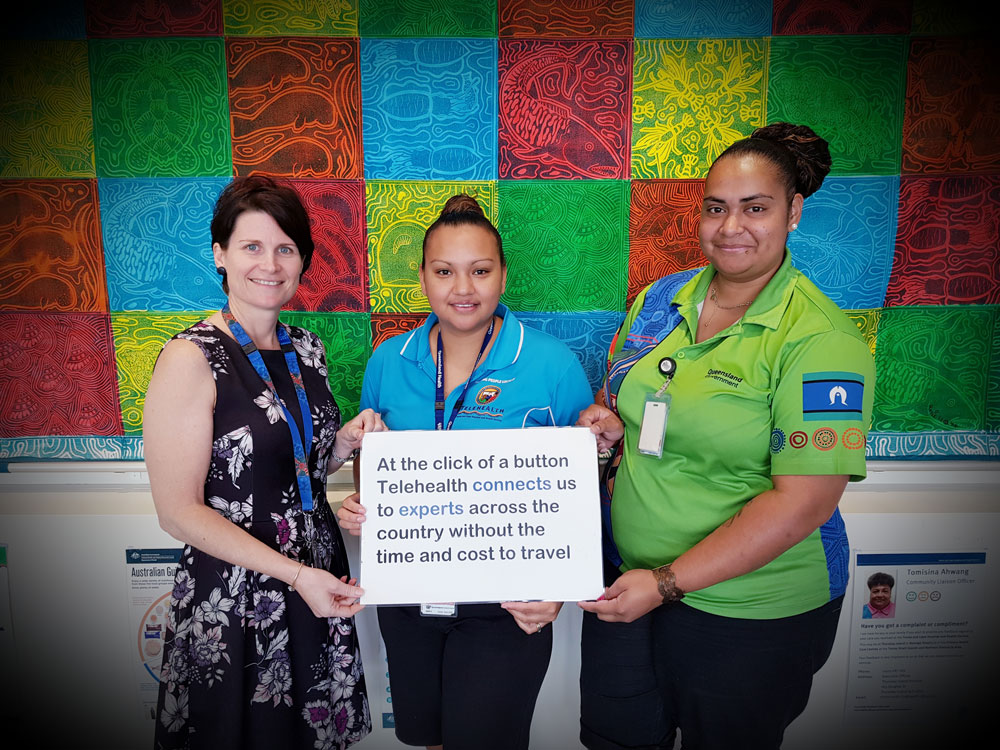The marvels of telehealth are being celebrated across Australia as part of National Telehealth Awareness Week.
With one of the largest managed telehealth networks in the southern hemisphere and a well-regarded international reputation, Queensland has much to celebrate when it comes to telehealth. What started out 30 years ago as an expensive service beaming blurry images via satellite or fax machine now boasts more than 200 hospitals and community services connected and performing more than 160,000 telehealth events each year.

Caption (L-R): Naomi Doherty, Stephina Newman and Rosetta Morseu from the Torres and Cape Hospital and Health Service.
As part of our celebration of telehealth we’re delving into the archives to see just how far telehealth has come and where it might be going, according to Daniel Best from our Telehealth Support Unit who has been with the service for 13 years.
‘One of the first applications of telehealth in Queensland was a mental health service delivered from Brisbane and Townsville which provided much needed assistance to Mount Isa by improving access to specialist services for patients. It also helped build the capability of rural mental health workers. This type of service still operates to this day, albeit with far more modern technology,’ Daniel said.
‘By around 1994 email was being introduced across government and increased internet speeds meant we could expand telehealth further. As things like bandwidth and resolution improved even more, telehealth was able to expand its offerings to include just about every medical speciality.’
‘In the early 2000s telehealth technology was starting to mature and new hardware allowed us to connect highly advanced cameras, screens and even medical equipment for real-time transmission. Because of these advances, tele-chemotherapy services are now being delivered at many locations across the state, with nurses working with patients in rural areas under the direct supervision of oncologists. This is a recent advancement and shows how Queensland is leading the way in tele-chemotherapy in Australia,’ Daniel said.
'And we will continue to find more options for diagnoses and treatments for a range of health conditions as technology advances.’
So on that note, where does Daniel see telehealth going?
‘I believe in the near future we can expect to see patients using their own smart devices and wearable technology to allow clinicians to more efficiently and effectively monitor their medical conditions. And this would be remotely – patients won’t have to come into hospital as regularly as they might do now,’ Daniel said.
Only time will tell!
Read more news or to keep up to date with Clinical Excellence Queensland, subscribe to our mailing list or follow us on Twitter, Facebook or Instagram.
For more information on telehealth in Queensland visit the website